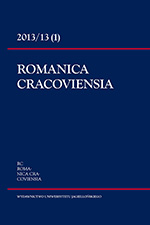La preposizione in e i suoi corrispettivi polacchi – uno studio cognitivo
The Italian preposition in and ist Polish equivalents – Cognitive approach
Author(s): Maria MalinowskaSubject(s): Language and Literature Studies
Published by: Wydawnictwo Uniwersytetu Jagiellońskiego
Keywords: preposition; prototype; cognitivism; teaching; learning; Italian language
Summary/Abstract: Prepositions are highly polysemous items i.e. they are used in various semantic and syntactic contexts. In the theory elaborated by Johnson (1987) and Lakoff (1987), image schemas have been applied to the analysis of the meaning of prepositional phrases. These structured wholes allow for the interpretation of the prepositional phrases both in spatial contexts (locational and directional) and in their metaphorical extensions. The analysis of the preposition in in Italian in spatial contexts leads to the conclusion that the unit in is a linguistic tool that engenders the container schema in whatever spatial context (static or dynamic) it appears. In dynamic contexts the container schema structures only the final location of the trajector which is located in the inner part of the landmark. Directional movement is structured with a path schema built up into the verb stem. The in phrases out of the context (without a static or dynamic predicate) can receive both in or into interpretation. There is only a partial overlap between the uses of the preposition in in Italian and in Polish, which is due to different categorisations of spatial relations in both languages. The Polish equivalents of in phrases in Italian are the following: w+loc, w+acc, na+loc, na+acc i do+gen. They involve different image schemas including the container schema. The first structure w+loc is modelled by the container schema, the second in+acc by the path and container schema, the third na+loc by the support and contiguity schema, the fourth na+acc by the path and support and contiguity schema and the fifth do+gen by the endpoint schema. These correspondences may result useful in the teaching/learning process of prepositional units.
Journal: Romanica Cracoviensia
- Issue Year: 13/2013
- Issue No: 1
- Page Range: 59-70
- Page Count: 12
- Language: Italian

